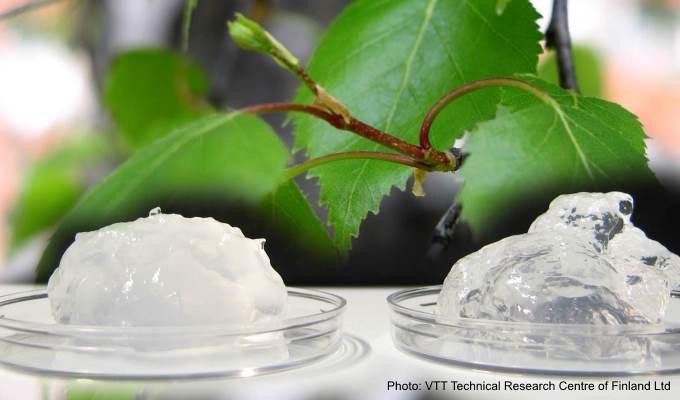
While nanocellulose was discovered already in the late 1970s, it was only in the last ten years that a rise of patent applications related to nanocellulose occurred. As promising as the nanocellulose materials do sound, we are still waiting to see their concrete applications expand to mass production.
Nanocellulose is nano-structured material derived from cellulose fiber. Depending on the nanocellulose type, it typically measures between 2-50 nm in width and 100-5 000 nm in length, which compares to 80 000 nm of human hair width and 0.3 nm of a gold atom’s width. Nanocellulose has numerous beneficial qualities, including light weight as well as high strength and absorbency, which means it can improve the functionality and cost-effectiveness of various materials and products. Nanocellulose is completely renewable which gives it an advantage over fossil fuel based raw materials.
A variety of applications across industries
The potential applications for nanocellulose are numerous, including the paper and board, composites, food, cosmetic and pharmaceutical as well as electronics industries.
Probably the first application for bacterial nanocellulose, one of the main categories of nanocellulose, was developed back in 1989 when Sony made a limited set of 2,000 units of headphones. Sony apparently tried every conventional material for forming diaphragms but found nothing which would yield the 'broad, deep sound of a room speaker system' and eventually discovered "bio-cellulose”. The price for the headphones was a staggering 2,499.95 US dollars. Since then, due to its high purity, bacterial nanocellulose has been used in applications such as wound dressings, face masks and artificial blood vessels. It is produced synthetically from low molecular weight sugars such as glucose by using acetic acid bacteria.
Nanocrystalline cellulose (NCC or CNC), another type of nanocellulose, is produced by strong acid hydrolysis and is already being manufactured in a demo production plant in Canada by CelluForce. However, actual high volume applications are still missing. So far it has been tested in oil drilling applications and used in adhesives. As far as composite use, the problem is how to utilize the full strength potential of the crystals as they easily behave like a filler.
Nanofibrillated cellulose (NFC), the third main category, is produced by mechanical fibrillation and can be used in industrial and food applications as a rheology modifier. It has also potential for use as a barrier material in food packaging as it has better oxygen barrier properties than polyethylene for example. Wood-derived ingredients, such as xylitol (E967), microcrystalline cellulose (E460), cellulose powder (E460) and carboxymethylcellulose (E466) have been used as food additives already for decades. However, food additive or novel food legislation does not – at least yet – cover nanofibrillated cellulose. It seems likely though that nanofibrillated cellulose will be added to E460.
The packaging industry is driving ecological and lighter packaging material, favoring low grammage coated boards. With nanofibrillated cellulose, the basis weight of board material can be reduced without compromising the required strength properties. The result is light weight products that consume less raw materials, which, in turn, increases revenue and creates smaller ecological footprint. For this reason, nanofibrillated cellulose is already being produced in industrial scale and has found its way into a high volume application in the liquid packaging board industry.
Building a solid business case
The above means that the best option is to produce nanofibrillated cellulose at the same site where it is used. For example in the board application, this integration provides clear advantage in quality and in energy efficiency.
A large scale production of bacterial nanocellulose would require high volumes of sugars, nutrients and fermentation tanks. In addition, production capability is also very low, at 0.4 g/l/h. The solution could lie in genetically-altered algae that would be entirely self-sustaining. They could produce their own food from sunlight and water, and absorb carbon dioxide from the atmosphere.
Nanocelluloses are generally considered expensive and challenging to produce. High energy consumption and complicated chemistry create a hindrance for entry to market, added to the competition from already existing products. This means that it would be crucial to create completely new applications or significant added value compared to existing rivals. In addition, current low oil prices can have a negative effect on novel products that might not be able to compete in the same price league.
The key is to identify the applications where currently available products can be out-performed by nanocellulose. In the optimal case, nanocellulose would solve a problem where existing products have failed. This would also require that customers understand the potential of nanocellulose and create a market-pull for the product.
In the end, it all comes down to bringing together the right specialists with extensive knowhow and tuned mindset for solving these obstacles.
Did you know?
Pöyry is involved in nanocellulose business through its Pöyry µCellTM process concept for producing nanocellulose reinforced packaging board. We also provide market entry and business development strategies, technical concept studies and market analyses.
